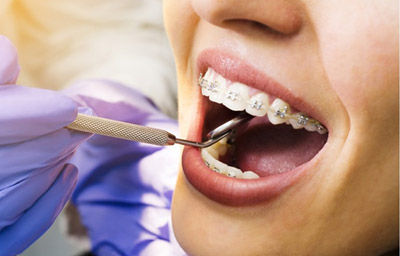The Basic Principles Of Causey Orthodontics
Table of ContentsSee This Report on Causey OrthodonticsThe Of Causey OrthodonticsThe 9-Minute Rule for Causey Orthodontics7 Easy Facts About Causey Orthodontics DescribedMore About Causey Orthodontics
Ignoring occlusal relationships, it was typical to get rid of teeth for a selection of oral concerns, such as malalignment or congestion. The concept of an intact dentition was not widely valued in those days, making bite correlations appear pointless. In the late 1800s, the concept of occlusion was crucial for producing reputable prosthetic substitute teeth.As these ideas of prosthetic occlusion progressed, it became an invaluable device for dentistry. It was in 1890 that the job and impact of Dr. Edwards H. Angle started to be felt, with his contribution to modern-day orthodontics particularly significant. Focused on prosthodontics, he educated in Pennsylvania and Minnesota before guiding his attention in the direction of dental occlusion and the therapies needed to preserve it as a regular condition, therefore coming to be known as the "dad of contemporary orthodontics".

The principle of ideal occlusion, as postulated by Angle and integrated into a classification system, enabled a shift towards dealing with malocclusion, which is any kind of deviation from typical occlusion. Having a full collection of teeth on both arcs was very demanded in orthodontic therapy because of the requirement for specific relationships between them.
See This Report about Causey Orthodontics
As occlusion ended up being the key concern, facial percentages and looks were ignored - orthodontist services. To attain perfect occlusals without utilizing exterior forces, Angle proposed that having ideal occlusion was the most effective way to gain optimal facial aesthetics. With the passing away of time, it ended up being rather obvious that even an outstanding occlusion was not ideal when thought about from a visual viewpoint
Charles Tweed in America and Raymond Begg in Australia (who both examined under Angle) re-introduced dentistry extraction into orthodontics throughout the 1940s and 1950s so they could improve face esthetics while additionally ensuring far better security concerning occlusal partnerships. In the postwar period, cephalometric radiography begun to be used by orthodontists for determining adjustments in tooth and jaw placement brought on by development and treatment. It ended up being obvious that orthodontic therapy might adjust mandibular advancement, resulting in the formation of practical jaw orthopedics in Europe and extraoral force procedures in the United States. These days, both useful devices and extraoral tools are applied around the globe with the aim of modifying development patterns and forms. Going after true, or at least boosted, jaw relationships had ended up being the main purpose of treatment by the mid-20th century.
10 Easy Facts About Causey Orthodontics Explained
 Up until the mid-1970s, dental braces were made by wrapping steel around each tooth. https://www.empowher.com/users/causeyortho7., it ended up being feasible to rather bond metal brackets to the teeth.
Up until the mid-1970s, dental braces were made by wrapping steel around each tooth. https://www.empowher.com/users/causeyortho7., it ended up being feasible to rather bond metal brackets to the teeth.Andrews provided an informative interpretation of the perfect occlusion in long-term teeth. This has actually had purposeful effects on orthodontic treatments that are provided consistently, and these are: 1. Correct interarchal connections 2. Proper crown angulation (idea) 3. Right crown disposition (torque) 4. No turnings 5. Limited contact factors 6. Apartment Contour of Spee (0.02.5 mm), and based upon these principles, he found a treatment system called the straight-wire device system, or the pre-adjusted edgewise system.
The advantage of the layout depends on its brace and archwire combination, which requires only marginal cord flexing from the orthodontist or clinician (affordable orthodontist near me). It's appropriately called hereafter function: the angle of the slot and thickness of the brace base eventually identify where each tooth is situated with little demand for additional control
Causey Orthodontics for Dummies
Both of these systems used similar braces for every tooth and required the bending of an archwire in 3 planes for situating teeth in their preferred settings, with these bends dictating supreme positionings. When it pertains to orthodontic appliances, they are split right into two types: detachable and dealt with. Detachable devices can be handled and off by the client as required.

Thus, virtually all contemporary fixed devices can be thought about variations on this edgewise home appliance system. Early 20th-century orthodontist Edward Angle made a major payment to the world of dental care. He created four unique appliance systems that have actually been used as the basis for several orthodontic treatments today, barring a couple of exceptions.
Excitement About Causey Orthodontics

The wire finished in a string, and to relocate it ahead, an adjustable nut was used, which enabled a rise in area. By ligation, each private tooth was affixed to this large archwire (emergency orthodontist near me). Due to its minimal variety of motion, Angle was incapable to accomplish precise tooth placing with an E-arch
These tubes held a soldered pin, which might be rearranged at each consultation in order to move them in place. Referred to as the "bone-growing home appliance", this device was thought to encourage healthier bone growth as a result of its capacity for moving pressure straight to the roots. Nonetheless, executing it confirmed bothersome in reality.